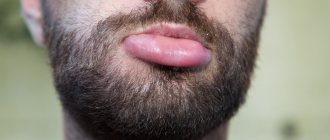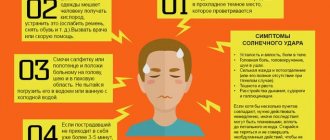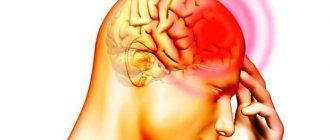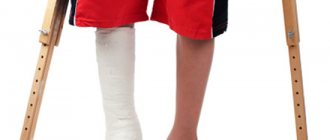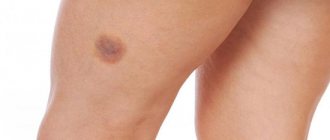Snake bite
A snake bite is dangerous if the reptile is poisonous. The serious consequences that develop after injection of poison are reversible if the victim is provided with timely medical assistance. A bite from non-venomous individuals can lead to the development of an inflammatory process if the wound has not been treated with an antiseptic and pathogenic microflora has penetrated. Rarely, in some patients a local allergic reaction may result from a bite.
Poisonous snakes of Russia
The common viper is the most common snake in Russia. It can be found in any part of the country except the Far North. Reptiles live in mixed forests, on the banks of rivers and lakes, in fields and swamps. The common viper can also be found in the mountains, at levels up to 3000 m above sea level.
Other poisonous snakes that live in Russia:
- Central Asian viper;
- viper;
- steppe viper;
- Cottonmouth;
- Caucasian viper;
- tiger snake, etc.
The danger of attack by various types of snakes
Quite often, poisonous snake bites cause death. The main danger is that a large purulent wound forms at the site of the lesion. The attack of some species of snakes ends in lightning death.
The most dangerous representative of reptiles is the royal asp. Clinical picture: minor pain, which is replaced by numbness of the whole body and limbs, muscle paralysis. If you do not get to a medical facility in a timely manner, death quickly occurs.
Next, we will consider the bites of the most common types of snakes.
Cobra bite
Characteristic symptomatic manifestations may be as follows: severe pain, which is accompanied by extensive erythrocyte hemolysis and the development of jaundice/liver failure. The health of the injured person deteriorates significantly. Emergency hospitalization is required to avoid death.
Rattlesnake bite, pit viper
The following main symptoms are characteristic of rattlesnake bites: burning and terrible pain, instant swelling, formation of blisters and bleeding, and the formation of necrotic wounds. Then the body temperature rises, general intoxication and fever begin, nausea and severe vomiting are present. Failure to provide medical care in a timely manner can result in life-threatening internal bleeding from the gastrointestinal tract.
The rattlesnake, whose bite can be fatal, is one of the most dangerous snakes on Earth.
When does a snake bite?
Snake bite wounds
Snakes do not attack humans without reason. Reptiles try to avoid contact with people. If the viper senses the vibration of the ground from approaching footsteps, in most cases the snake will try to hide unnoticed. Some representatives of poisonous snakes, when the border of their territory of residence is violated, can hiss threateningly, but this behavior of the reptile should be regarded as a method of defense. A poisonous snake bite can occur if a reptile is accidentally or deliberately stepped on. The reptile will attack when someone tries to pick up the snake.
The danger of a poisonous snake bite depends on the following parameters:
- strength of poison (toxicity);
- bite site;
- the period of time that will pass from the moment the poison enters the wound until first aid is provided;
- the patient’s age and individual characteristics of the body;
- number of bites.
Main characterizing features of snakes
Features of snakes
Despite the existence in nature of a large number of snakes, more bites are observed from reptiles of the genus Viperidae, Colubridae and Aspiridae.
Of all the already-like species, the common snake and the copperhead are the most common. It should immediately be noted that these reptiles and their bites are considered safe for humans and do not lead to severe disruptions in the functioning of the body. The only unpleasant symptom that appears when bitten is a feeling of pain; in some cases, there may be a process of suppuration in the area where the bite is located.
As for the viper family, its main representative is the common viper. She is distinguished by her peaceful nature, because she can attack a person only when he tries to pick her up or accidentally steps on her. In all other cases, the reptile will try to escape.
It should be noted that deaths as a result of a viper bite are extremely rare. This is explained by the fact that when a bite occurs, a small amount of poison enters the human body. After damage to the skin, the poison can penetrate muscle tissue and the bloodstream. The entry of poison into the blood is considered especially dangerous, because this leads to the formation of severe pathological conditions and processes in the human body.
The most prominent representative of the aspid family is the Central Asian cobra. A peculiarity of the attack of this reptile is that it can warn of an attack by its behavior. The bite of this poisonous snake is considered quite dangerous, because the entry of its poison (neurotoxin) into the human body leads to the formation of paralysis and paresis.
Symptoms of snake bites
After a snake bite, symptoms that indicate poisoning of the body with toxins are distributed according to severity:
- The first degree is characterized by the presence of 2 bite wounds (sometimes there may be 1 puncture from a tooth), which has a triangular shape. The pain syndrome is moderate.
- In case of poisoning of moderate or second severity, the patient experiences a severe burning sensation in the affected area. My health is getting worse. The victim begins to have a headache, the damaged tissue bleeds, and swelling of the skin appears at the site of the bite, which can quickly increase.
- The severe form is characterized by dizziness, muscle pain, fever, bloody diarrhea, drowsiness, breathing problems, nausea, vomiting, confusion, etc.
- In the fourth degree of poisoning, vision deterioration, disruption of the cardiovascular system, and progression of renal and liver failure are observed. The victim develops paralysis, which can cause hypoxia. In the area of the wound, the tissue becomes blue and blisters form.
In most cases, the first symptom is pain at the time of the bite. But there are situations when a person does not see the snake and does not feel damage to the skin. Once the toxin enters the bloodstream, the poison quickly spreads throughout the body.
If the reptile has a potent poison, a deterioration in general health occurs a few minutes after the bite.
Spider bites: symptoms and first aid
There are more than 20,000 species of arachnids in the world. Although all spiders are poisonous, fortunately, in most species of spiders the toxicity of the venom is not so great and its amount is not enough to cause symptoms of poisoning in humans. In our latitudes, only two types of spiders are dangerous to humans: the karakurt (or black widow) and the tarantula.
Appearance of karakurt. This is a black spider of relatively small size (up to 2 cm in length). Its distinctive feature is red spots on its abdomen.
Appearance of a tarantula. The average size of a spider is about 3 cm (there are specimens up to 12 cm). The color can be dark brown or black. The tarantula is easily recognized by the hairs that cover the entire body of the spider.
Due to its size and hairiness, the tarantula looks much scarier than the karakurt, but the bite of this spider does not pose a serious threat to life.
Karakurt is most dangerous in the spring and summer months, from May to July.
At this time, his migration begins. Despite the danger, spiders themselves never attack humans. A bite can most often be obtained by touching a spider. Death from a karakurt bite is rare (1-2% of cases). If you suspect such a bite, you should take the child to the hospital as quickly as possible.
The spider bite itself resembles a slight angle and is almost painless. The first symptoms after a bite are observed only a few hours later. The symptoms of a spider bite are as follows:
- Redness and swelling. An hour later - severe pain at the site of the bite. The pain then spreads to the lower back, calf muscles, abdomen and shoulder blades. The pain radiates to the armpits and soles of the feet.
- Weakness.
- Dizziness.
- Nausea.
- Swelling of the face.
- Increased heart rate.
- Dyspnea.
- Increased blood pressure.
- Increase in body temperature to 38–40 °C.
- Convulsive twitching of individual muscle groups.
In severe cases, excitement gives way to depression, a coma occurs, convulsions, severe shortness of breath, and pulmonary edema appear.
If the body has managed to cope with the effects of the poison, then after 3–5 days a rash appears on the skin, but weakness and poor health persist for several weeks.
Tarantula venom is much weaker than karakurt poison. In terms of pain, a spider bite resembles a bee sting. Usually noted:
- painful local phenomena;
- swelling and swelling of tissue at the site of the bite;
- heaviness throughout the body;
- apathy, lethargy;
- drowsiness.
After a few days, all phenomena disappear.
Algorithm of actions:
- Lay the child down, warm and cover him, do not allow him to move.
- Give your child a pain reliever.
- Apply cold to the bite site. If a limb is bitten:
- bandage the limb tightly (start bandaging 5 cm above the bite site);
- carry out immobilization;
- control the applied bandage, as swelling of the limb increases, loosen it;
- the victim should be in such a position that the bitten limb is below the level of the heart.
- Actively feed your baby.
- If the condition is severe and it is not possible to get medical help within an hour, administer a hormonal anti-inflammatory drug.
If you are bitten on the head or neck, apply pressure to the bite site.
First aid for a snake bite
Most often, reptile bites occur on the upper or lower extremities. First aid to the victim:
- It is necessary to calm the bitten person and give the person a horizontal position.
- If the snake is still attached to the skin, you should unhook the reptile. This will help reduce the amount of poison injected.
- Reptile identification. If it is not possible to determine the type of reptile yourself, it is recommended to catch (kill) it and send it to a specialist for examination. The information will help you choose the right treatment (antidote) if the snake turns out to be poisonous.
- Calling an ambulance or transporting the victim to the hospital.
- If the affected area is under clothing, it is recommended to cut the fabric. Remove all existing accessories (rings, bracelet, watches, etc.) so as not to increase swelling.
When it is not possible to independently identify the type of reptile, the patient is monitored until the ambulance arrives. The absence of tissue swelling and increasing pain is a sign that the snake was not poisonous. If the bite was carried out by a poisonous individual, emergency care involves sucking out the poison. The victim must be laid down. To slow down the spread of the toxin throughout the body, the affected area should be immobilized.
Snake venom suction
The poison is sucked out with a rubber bulb, suction or mouth. It is recommended to begin removing the toxin from the wound no later than 5-10 minutes after the bite. The effectiveness of the method decreases if the procedure is started later. Snake venom will be dangerous for a person providing medical care if the oral mucosa is damaged.
To suck out the poison, you need to knead the bite site with your hands - this will improve the release of the toxin. They grab the skin around the wound with their teeth and begin to suck. At the same time, squeeze the skin in the bite area. The saliva containing the poison is spat out and the process is repeated. This procedure must be performed within 20 minutes. When some of the toxin has been removed, the wound is treated with hydrogen peroxide or another antiseptic without an alcohol base. A bandage is applied to the affected area, which should not be tight. You can apply a cold heating pad or ice to the bite site.
To reduce the symptoms of intoxication, the victim is advised to drink plenty of fluids. Additionally, the person bitten can be given an antihistamine. If breathing stops, perform artificial respiration and indirect cardiac massage. The sooner first aid is provided to a bite victim, the higher the chance of a favorable treatment outcome. The danger of consequences increases if the snake has bitten a person in the neck, head or large vessel.
What to do if bitten by a viper
If it is possible to contact doctors or quickly take the victim to the hospital, this must be done. In domestic conditions, providing assistance with the bite of a poisonous snake, including a viper, is problematic.
Basic actions when attacked by a snake:
- take the victim to a safe place,
- suck out the poison
- lay him down and give him more liquid to drink,
- if you have an antiallergic drug on hand (Suprastin, Diazolin), it is given in a standard dosage.
So, what to do if you are bitten by a viper? Doctors argue about the advisability of suctioning out the poison. Firstly, the method is effective within 10 minutes after the attack. Secondly, if there are wounds in the rescuer’s mouth, the poison can enter his body. And then first aid will lead to two victims from the viper’s bite. Thirdly, the likelihood of infection increases. However, a correctly performed procedure reduces the concentration of poison in the human body by 30-50%.
You definitely can’t apply a tourniquet above the site of injury, but a pressure bandage will help, which is loosened as the swelling spreads. If the victim is sent in an ambulance, then the time when the pressure bandage was made is indicated to the doctors.
This is where the emergency assistance ends. The remaining manipulations are carried out in the hospital. Unfortunately, not everyone knows what to do if they are bitten by a viper, and therefore make mistakes. So, the victim needs rest, he should not be given alcohol, and it is better to treat the wound itself with a non-alcoholic antiseptic. It is not always possible to provide adequate first aid when bitten by a viper in the forest or in nature. The therapeutic tactic is to administer an antidote serum, but it cannot be found in a home medicine cabinet. Therefore, before hospitalization, the first medical aid for a person bitten by a viper in the forest involves immobilization, possibly applying a splint.
To stabilize blood circulation, the limbs (mainly legs) are raised to a height. Cooling the injured area is also part of first aid for a snakebite, but do not pour water or apply soil on the area - this increases the likelihood of infection.
What else you should not do when bitten by a viper is cut the wound to release the poison. Do not cauterize the puncture or actively move the limb. Because of this, the speed of spread of the poison increases. It is difficult to help a pregnant woman or children who have become victims of a snake. They are offered similar manipulations, but without the assistance of doctors it is almost impossible to achieve improvements.
Prohibited actions and treatment
In order not to cause additional harm to the victim, there are a number of rules that set out what should not be done in the event of a snake bite:
- Apply a tourniquet. Impaired blood circulation will increase the degree of tissue damage in the wound area.
- Drink alcohol.
- Use local anesthetics or adrenaline.
- Expose the victim to any physical activity.
- Apply a warm heating pad to the affected area.
- Prolonged exposure to cold is also contraindicated, since ice can cause tissue frostbite.
- A snake bite should not be cauterized.
Serum against snake venom
Treatment of intoxication of the body with snake venom is carried out using a special serum. The antidote is selected depending on the type of snake that bit. The most effective medicine will be during the first hours after poisoning. The serum is administered subcutaneously or intravenously (depending on the type of antidote).
If the medicine was administered incorrectly or untimely, the serum can cause a severe allergic reaction and provoke anaphylactic shock. When the patient is in critical condition, the doctor decides whether to use serum.
During the treatment process, the patient is prescribed a comprehensive examination of the body, which includes:
- examination of general blood and urine tests;
- study of biochemical parameters;
- analysis of liver enzymes, etc.
If left untreated, the consequences may be irreversible. A complication may be chronic renal failure. Death cannot be ruled out.
What not to do
- The most dangerous and common mistake when providing first aid to a victim is the use of a tourniquet, which is applied to an arm or leg. This will not help the spread of the poison, since it is more aggressive and will still penetrate the body. But the bitten area will suffer. The fact is that the poison provokes a process such as tissue necrosis. If a snake bites your leg or arm, the tourniquet can lead to gangrene.
- It is unacceptable to cut the wound; it can cause infection.
- You cannot cauterize the bite site. This will not help, since the viper injects its poison deeply. Cauterization only further injures the bite site.
- Do not drink alcohol, it speeds up the effect of the poison.
- Don't waste your time chasing a snake.
What should you do if you are bitten by a snake? The main thing is to remain calm. Panic will not lead to anything good. If a person becomes confused and fear settles in him, he may waste time. You should know that a viper bite is very rarely fatal, even if the victim did not seek medical help.

